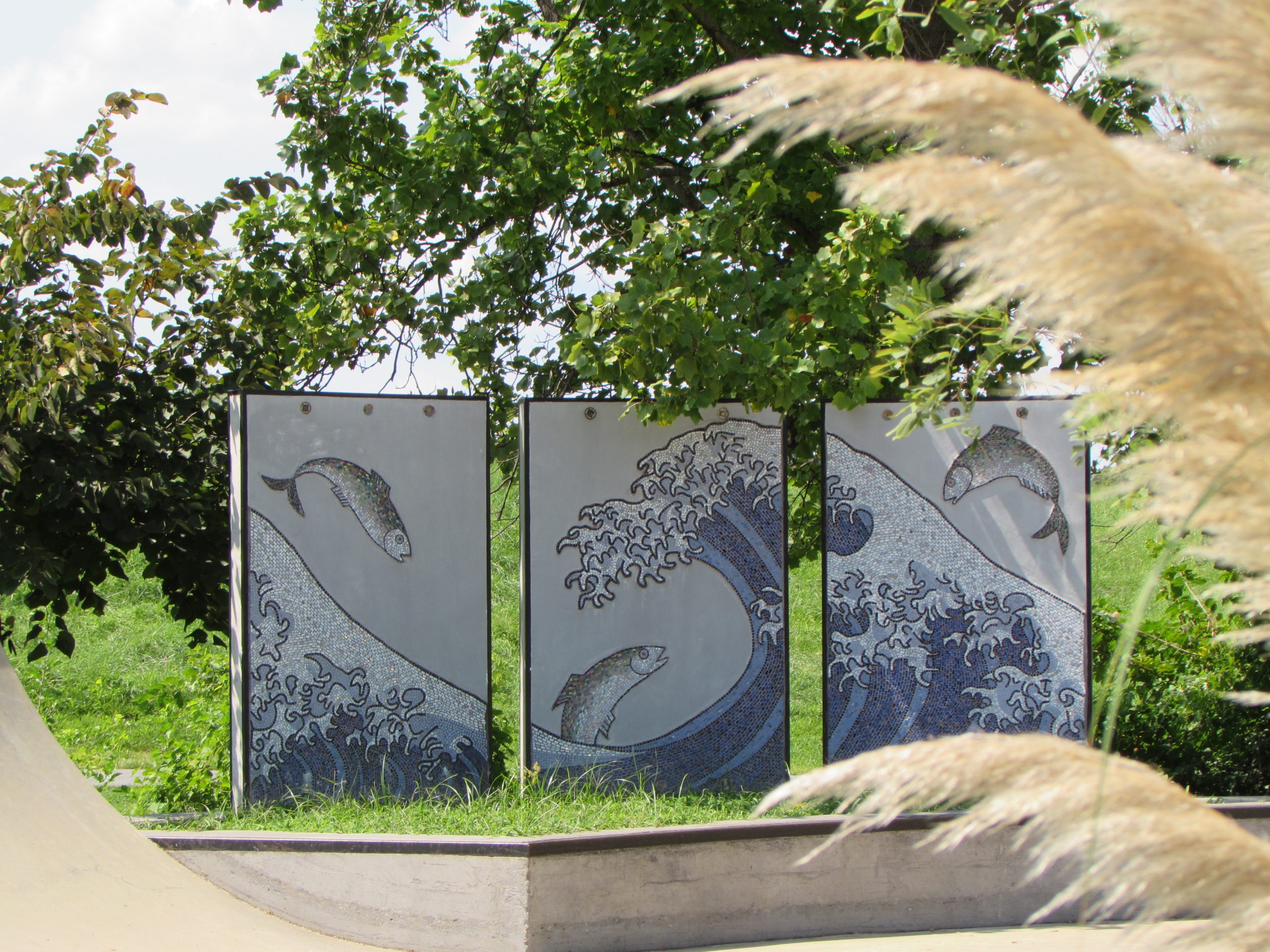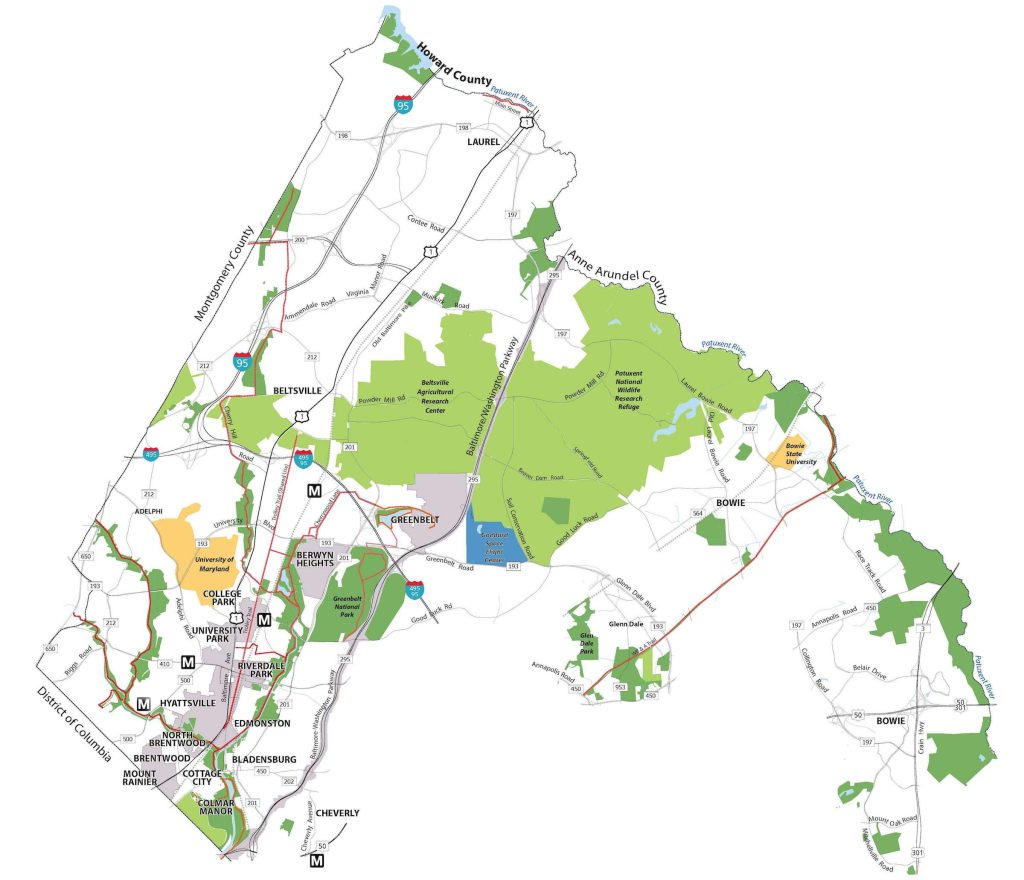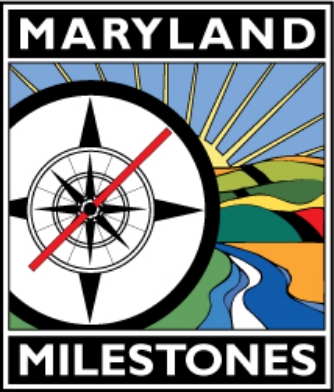District Boundaries
The Anacostia Trails Heritage Area service area boundary is set by a state process.
We want to expand our boundaries and increase our impact.
District Boundaries
Maryland has a nationally unique state heritage tourism program that includes 13 designated areas working in every corner of the state – only New York and Pennsylvania have similar programs. Founded in 1997, the program is administered by the Maryland Heritage Area Authority. In these certified regions, public and private partners make commitments to preserving historical, cultural, and natural resources for sustainable economic development through heritage tourism. Prince George’s County boosts one of these special tourism investment districts called the Anacostia Trails Heritage Area.


The Anacostia Trails Heritage Area was first certified in 2001 and supported by a coalition of municipalities within the area’s boundary. All state Heritage Area boundaries are carefully considered and researched – inclusion requires alignment with historical themes, local support, and visitor-ready sites. Prince George’s County’s heritage area encompasses over 100 square miles of Northern Prince Georges County – bordered by Washington, D.C. to the south, Montgomery County to the West, Howard and Anne Arundel County to the North and encompassing portions of Bowie, Glenn Dale, and Cheverly to the East. The organization is working with state, county, and local partners on a possible boundary expansion into Southern Prince George’s County.
The Heritage Area brings a valuable distinction and financial resource for cultural attractions. Inclusion brings access to grants, technical assistance, and marketing. As an official management partner with the state, Anacostia Trails Heritage Area’s impact is evaluated regularly by the Maryland Heritage Area’s Authority. In a 2020 report, the organization’s economic impact was calculated at $36.1 million annually including enticing heritage tourists to the region and the organization’s grantmaking activities.
Based on the success of the organization’s efforts and the sustained need for tourism marketing, Anacostia Trails Heritage Area embarked on a boundary expansion feasibility study. With state and county funding, a highly-specialized team of consultants has been crafting a possible approach to the bring the program to a larger area of Prince George’s County, specifically to the unincorporated areas of Southern Prince George’s County. Anacostia Trails Heritage Area is working very closely with partners across Prince George’s County as well as the Southern Maryland State Heritage Area. In some areas of southern Prince George’s County, cultural attractions also have the opportunity to be part of a proposed Southern Maryland National Heritage Area that would bring an additional level of support.
The possible areas to be included in a future boundary expansion of the Anacostia Trails Heritage Area – and thus eligible for the organization’s grants, assistance, and partnership, include but are not limited to:
- Fairmount Heights
- Seat Pleasant
- Landover
- Lanham
- Largo
- Oxon Hill
- Clinton
- Temple Hills
- Fort Washington
- Accokeek
- Upper Marlboro
- Brandywine
- Aquasco
- Cedar Haven
- Eagle Harbor

What Happens Next?
The process for amending a boundary involves many steps before pursuing an official request to the Maryland Heritage Areas Authority (MHAA). Steps include:
Outreach to Potential Partners
ATHA, Inc. is conducting outreach with elected officials of incorporated municipalities, representatives for unincorporated communities, Prince George’s County Schools officials, Maryland National Capital Parks and Planning staff, National Park Service staff and others representing natural, historic, and cultural resources.
Consider Administrative Impact
ATHA, Inc. will evaluate how an expanded boundary could impact the organization’s staff, budget, and governing structure. These considerations will determine a funding structure to include financial contributions from partners in the expanded boundary area, additions to the board of directors, and potential staff additions.
Determine Final Boundary Proposed Boundary
ATHA, Inc. will determine the most appropriate boundary amendment based upon outcomes from potential partner meetings and consideration of administrative impacts.
Add to Comprehensive Plan
MHAA requires local jurisdictions to amend their local comprehensive plan to incorporate those portions of the Certified Heritage Area management plan that apply to the affected jurisdiction.
Official Request to MHAA
ATHA, Inc. will submit an official request to MHAA for a Management Plan Update (Estimated 2023). MHAA staff will tour the area and host a public meeting to confirm a desire to join the heritage area. MHAA will then review the application and notify ATHA, Inc. of the decision.
Outreach to Potential Partners
ATHA, Inc. is conducting outreach with elected officials of incorporated municipalities, representatives for unincorporated communities, Prince George’s County Schools officials, Maryland National Capital Parks and Planning staff, National Park Service staff and others representing natural, historic, and cultural resources.
Consider Administrative Impact
ATHA, Inc. will evaluate how an expanded boundary could impact the organization’s staff, budget, and governing structure. These considerations will determine a funding structure to include financial contributions from partners in the expanded boundary area, additions to the board of directors, and potential staff additions.
Determine Final Boundary Proposed Boundary
ATHA, Inc. will determine the most appropriate boundary amendment based upon outcomes from potential partner meetings and consideration of administrative impacts.
Add to Comprehensive Plan
MHAA requires local jurisdictions to amend their local comprehensive plan to incorporate those portions of the Certified Heritage Area management plan that apply to the affected jurisdiction.
Official Request to MHAA
ATHA, Inc. will submit an official request to MHAA for a Management Plan Update (Estimated 2023). MHAA staff will tour the area and host a public meeting to confirm a desire to join the heritage area. MHAA will then review the application and notify ATHA, Inc. of the decision.Disclaimer: This project has been financed in part with state funds from the Maryland Heritage Areas Authority, an instrumentality of the State of Maryland. However, the contents and opinions do not necessarily reflect the views or policies of the Maryland Heritage Areas Authority.
Note
There is a state framework for possible expansion and the organization is nearly complete with the first phase. A draft report, called a Situation Boundary Analysis, will be released in early 2022. The next phase of the project would include amendments to the Heritage Area’s management and interpretation plans, stakeholder meetings and tours, and a hearing and determination by the Maryland Heritage Areas Authority.

